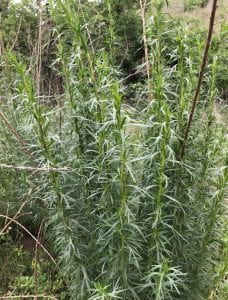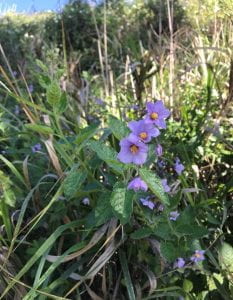3/29-4/3
Site 1: 34.284, -119.211
SIte 2 34.480, -119.222
Site 1 is my home
Site 2 is Los padres national forest
https://www.google.com/maps/place/Chief+Peak/@34.5032757,-119.2296665,13.25z/data=!4m5!3m4!1s0x80e9bb93fc4386b9:0x74d0875af1210e01!8m2!3d34.5105467!4d-119.1678864
Site 1: flat and just common plants in my backyard
Site 2: Hilly with mixed chaparral
At site 2, the first thing I noticed on my hike in the morning was the sound of frogs. There was a stream nearby that I didn’t notice until the sound coming from the frogs. It sounded like there was a dozen of them down in the canyon, this could have been a sign for mating. The next thing I noticed was a garden snake on the trail. Luckily it wasn’t a rattle but the temperature hasn’t been that warm for them to be out about frequently. The next thing I noticed was the blooming of all the plants and rebirth of them after the Thomas Fire in 2017.
At site 1, I looked around my front and backyard and found some planet with leaves.
cistanthe grandiflora
This had plant contained a thick blue-green foliage. The leaf edges contained a slight smooth feeling to them with an ovate shape.The feeling is quite strange with a cold and muggy feeling.
bougainvillea
The shape of this plants leaves had an ovate shape and leaves that have somewhat of a smooth and rugged feeling and leaf edges that displayed undulate.
asclepias fascicularis
The leaves of this plant had leaf edges that were ciliate. The leaves were shaped as linear and had a venation that were longitudinal.
At site 1, I forgot about this assignment and would have looked harder for the signs of spring. But I could only just think back at the major things I saw on the hike. Granted it was still a great experience to hike 22 miles and have it take up most of the day. Even though I didn’t have have this assignment in the back of mind during the hike, I was still able to peacefully observer my surroundings the whole way. Some pictures of that are below.
Preview attachment IMG-1922.jpg




